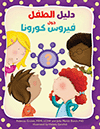All of us have spent time listening to news coverage about tragic events, such as natural disasters, acts of terrorism and events with the loss of human life. We hear stories from survivors and are touched by their tales of heroism. Through these firsthand accounts, we may feel connected to a tragedy even if we are not personally involved.
As adults watch, so too do children. They may be playing in a room where the TV is tuned to coverage. They hear adults talking. They may not always understand what is being said, but sometimes that confusion can be a source of anxiety and worry.
Older children and teens gain much more of their information from the Internet and social media sites. Parents often do not know the extent of their children’s exposure to television.
For parents or caregivers, the question is, “How much is too much?”
Following the 1995 bombing in Oklahoma City and again after the terrorist attacks of 9/11, researchers found that those children who spent most or all of their time tuned to coverage reported more symptoms related to trauma.1 We don’t know if watching more of the coverage makes children more anxious. Or, if those children who are already more anxious are watching more coverage.
What we do know is, it’s important to take a break, to turn away from the coverage. Sometimes this is easier said than done. We do know that new information can be infrequent; continuing to watch replays of the same information is not helpful. Turning the news off does not mean we feel any less sad for what has happened, but it does mean that we are taking steps to limit our exposure and increase our resilience and the resilience of our children to cope in the face of difficult situations.2
Here are some ways to help you manage the amount of exposure your children have to tragic news events and how you can prevent overexposure:
- Talk to your children. Parents should have an age appropriate conversation with your children and teens about what they have seen and heard. Explain or correct rumors or misunderstandings that they may have.
- Be mindful of your children. It’s easy to get caught up in news coverage and not even realize your children are present. It’s unnecessary for very young children to watch news coverage at all. They may not understand that what they see are replays which can be misconstrued as circumstances happening again.
- Find other ways to connect. Children may want to send pictures they made or letters they have written to families, first responders, hospitals or teachers. This can be a way to take positive actions and express caring.
- Plan your TV/Internet viewing. Find windows of time each day (like in the morning, midday and evening) to watch. Limit this to 30–60 minutes. Then get up and do something else. It may be taking a walk, washing dishes or even reading a book. If you continue to want to stay with TV/Internet, switch to another show or site that has programming you enjoy.
- Enlist a buddy. Ask a friend to help you turn it off. Go out to lunch, see a movie or just simply spend time together. With children, find time to play games, read or other ways to enjoy being together. Laugh. It’s OK even in times of sadness or loss.
You or your children may find yourselves struggling to cope with tragic news events. If news coverage is interfering with your relationships, job performance, sleeping or eating habits, it may be time to talk to a psychologist to identify positive thoughts and actions that can help. If your children exhibit signs of anxiety, such as nightmares or anxiousness when a parent leaves them, psychologists can provide tips to overcome these symptoms and offer solutions to build their resilience for the future.






